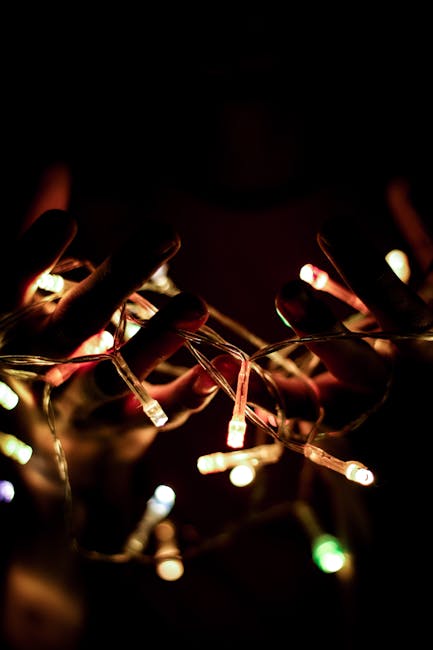Мюнхен (Германия). Лучший маршрут Баварии – Мюнхен за 1 день
Munich’s past, great and joyful, tragic and inglorious, full of significant and fatal events, embodied in the unique appearance of the city: in its streets, squares and buildings, public gardens, and parks. There are so many unusual and surprising things that you need to choose in advance if you try to see all the interesting places. Situated on the banks of the Isar River, in the south of Germany, in the foothills of the Alps, Munich attracts with its magnificent cathedrals with tall belfries, sweeping ceremonial squares, old houses with richly decorated facades, and flower baskets on the windows.
The official motto of Bavarian’s capital is “Munich loves you”. Indeed, getting here, it is immediately easy to feel the benevolent cheerful atmosphere of this South German city. World fame was brought him by the annual Oktoberfest festival and beer restaurants, the great football team of Bavaria, and the “Mecca” for lovers of powerful cars – the BMW Museum. Before tourists travel to Munich for the first time, the question often arises: what sight of the city needs to be visited first of all? We start our Munich route in one day with Hofgarten, a Baroque park in the center of Munich. You can get here from Munich Train Station in just a couple of minutes by metro. Hofgarten was laid in the Italian style in 1613-1617 under Maximilian I. The main entrance to the park is the gate facing the Teatinerkirche church, which is the first creation of the architect Leo von Klenze in Munich.
From the side of the German Theater Museum and Teatenerkirchen, the park is limited to the arcade galleries. In the center of the park is located the pavilion “Temple of Diana”, which was built in 1615. Inside the building is decorated with four wall fountains ornamented with seashells and mentioned in the “Earthly Dishes” by Andre Gide. Concerts are held in the pavilion, in the summer in the evenings on Wednesdays and Sundays they dance salsa, on Fridays the Argentinean tango, and in the afternoon visitors of the park are entertained by street musicians. [music] The park has well-kept lawns, numerous flowerbeds, and beautiful fountains, which remind us of the royal past, because once the kings walked here. You will also meet a large number of Munich residents sitting on benches. The south part of the park goes out on a facade of the Munich residence palace, and in the eastern part of the park, there is the Bavarian State Chancellery. The Munich Residence is a famous historical complex in the city center, a large-scale structure consisting of many buildings.
The history of the attraction dates back to the Middle Ages and belonging to the clan dynasty of Wittelsbach finally fixed the title of museum relict to the residence. The palace complex is considered to be an obligatory cognitive element for inclusion in the cultural route in Munich. To thoroughly explore its luxurious halls, the residence should be visited daily at least for a week: after all, there are as many as 10 courtyards and three main complexes – the Royal Chambers, the Old Residence, and the Festive Hall, and there are 130 halls in the Residence Museum alone! The museums of the Munich residence have been repeatedly recognized as the richest in Europe: among them are the Antiquaries of the 16th century, the Porcelain, Relic and Silver cameras, the amazing Miniature Cabinet, and the invariable pole of tourist attraction – the Treasury with one of the most valuable jewelry collections in the world.
On the Odeonsplatz square between the church of Saint Cayetan and the royal residence, the “Hall of the Bavarian generals” is neatly inscribed. This attraction has very mixed fame. Once this monument to the military victories of Bavaria became a symbol of a united Germany. But there was a period when the Munich residents themselves carefully avoided him. Over the years, in attitude for Feldherrnhall respect alternated with hatred, and even irony. But, in any case, it captures the history of Munich, Bavaria, and Germany as a whole. Feldherrnhalle is a loggia, which was built in honor of the Bavarian commanders by the decision of the King of Bavaria Ludwig I. Friedrich von Gertner was chosen as the architect, who created a gallery of generals on the model of the Loggia Lanzi in Florence. The monument was erected in the period from 1841 to 1844. In addition to its symbolic significance, it played a key role in the development plan of the city, connecting the old center with the new street.
Two stone lions stood guard over the central staircase. It is interesting to note a slight difference in the sculptural figures of the royal animals. The lion, facing the Residence, is depicted with an open mouth, and the lion, turned towards the church – with its closed mouth. Thus, the undeniable truth is reflected that you can argue with the monarch, but never God. Teatinerkirche – the name of the Catholic collegiate church of St. Caetan in Munich, was the court and at the same time the Order Church of the Theatines. This is the first church built in the style of Italian late Baroque on the north side of the Alps. The Church of St. Caetan is located near Feldherrnhalle and is included in the architectural ensemble of the Odeonsplatz square. [music] From the square we will move along the street Teateenerstrasse. After a couple of blocks, we will reach another green oasis in the center of the city – Marienhof A large lawn with 40 benches and 70 chairs offers enough possibilities to sit and rest in the greenery after a shopping trip.
You can walk on the lawn, while the dogs should be on a leash. From May to October, the Department of Education and Sports at the Marienhof organizes the practices of Far Eastern meditation and the art of relaxation, in which everyone can take part in everyday clothes completely free of charge. To the right of the lawns you will see the Cathedral of the Holy Virgin, also known as the Frauenkirche – the symbol of Munich and the tallest cathedral in the city.
Built-in the 15th century, the temple is also a significant monument of Gothic architecture. The main part of the construction was completed in 1488, and the domes, due to lack of funds, were completed only in 1524. At the time of completion, the cathedral accommodated 20000 visitors, despite the fact that the population of the city was only 13000 inhabitants. The facade is not rich in decoration, which is unusual for the Gothic style, but it looks solemn. The interior of the cathedral is no less unusual – instead of gloomy walls and darkness, as is usually the case in Gothic temples, the interior decoration is characterized by an abundance of light colors and stained glass windows, which creates a warm atmosphere inside the church. Also in the cathedral, you can see 22 majestic columns supporting the ceiling, an abundance of bas-reliefs, and several tombs. To preserve this symbol of the city as a result of a referendum held in 2004, the construction of buildings with a height exceeding 99 meters was prohibited. Exactly 99 meters is the height of the Cathedral of the Holy Virgin. Unusual for a Gothic cathedral copper church steeples resembling green bulbs are visible from any part of the city.
These domes, installed 40 years after the end of construction, became the symbol of Munich. Next, we will find the very center of the Bavarian capital – the Square of Maria or Marienplatz. Ever since the founding of Munich, Marienplatz played an important role in the infrastructure of the city. In the 12th century, it was located at the intersection of the main transport axes. Therefore, since 1158, city fairs and jousting tournaments have often been held here. Today, the victories of the brave knights are reminiscent of the ringing of the famous clock of the New Town Hall – one of the main attractions of Marienplatz.
At one time, the territory of the square was famous for the fact that there was a large fish market, decorated with the Fisbrunnen fountain, where traders kept the catch. The architectural ensemble was destroyed during the war and it acquired its present appearance after reconstruction. The square got its modern name only in 1638 when a column of Saint Mary was erected here – a symbol of the thirty-year war with the Swedes. Marienplatz is considered the most visited place in Munich. Here are the New and Old Town Halls, the column of the Virgin Mary, the Church of Saint Michael and Peter, a toy museum, and a fish fountain.
Column of Mary – this is a key symbol of Marienplatz, in honor of which the square got its name. In the center of the composition stands a gilded statue of the Virgin Mary. On the sides, you can see four cherubs symbolizing war, famine, unbelief, and the plague. New Town Hall – the majestic building, made in the neo-Gothic style and decorated with a huge dial. At 11 and noon, a puppet show is played here, during which miniature Bavarians depict scenes from life under a chime. In the courtyard of the town hall, you can read about the main historical events of Munich, as well as see stained glass windows and sculptures.
But the main property of the New Town Hall is considered to be the 85-meter observation deck, which offers a magnificent view of the city. To get here, you need to go into the arch and turn left, where you will see the ticket office and elevator. The old town hall is another architectural dominant of the square, built in the style of the new Gothic and Renaissance. Multi-colored towers and golden watches, decorated with symbols of the zodiac signs, give the town hall a puppet look. The construction dates from the 14th century and originally adorned the entrance to the city. The Museum of Toys is an exposition in one of the towers of the Old Town Hall. There is an exhibition of dolls, bears, soldiers, Christmas tree decorations, and other toys. Museum collections are located on two floors. During the period of Catholic Christmas, from the end of November to December, the Christmas market is held in the square. At this time, the entire territory of Marienplatz sparkles with Christmas toys and garlands and also pleases tourists with a huge number of souvenirs, toys, and gifts. If you stand on the Marienplatz near the fountain with your back to the New Town Hall, then in the back of the alley between the bookstore and the tall building with the “Deutsche Bank” sign, you can see the tall, rectangular church bell tower – the bell tower of St.
Peter’s Church. St. Peter’s Church is the oldest parish church in Munich. The Munchers call it “Alter Peter” (Old Peter). The height of its bell tower is 92 meters. They built a Romanesque church in the 11th century on Petersbergl Hill on the site of an old wooden church. In the future, the church was rebuilt several times, and changed its appearance. In the XVIII century, the architect Johann Baptist Zimmermann redid it in the Rococo style. The main decoration of St. Peter’s Church is an altar made in 1733 by the Azam brothers.
The masters built a magnificent baroque scene with figures of four saints, Corinthian columns, and a velvet-golden backdrop. In the center of the whole composition sits the monumental figure of St. Peter in the papal tiara. For Munich, he serves as the personification of papal authority. According to the existing tradition, after the death of the next pope, the papal tiara is removed from the head of St. Peter, and in Munich, all flags are lowered in mourning. After the election of the new pope, the solemn ceremony of laying the papal tiara on his head, taking place in Rome, is duplicated in Munich: the papal tiara returns to the head of the figure of St. Peter. During the Second World War, St. Peter’s Church was badly damaged and was restored only by the year 2000.

From Marienplatz, we will move along Kaufingerstrasse, which is a couple of blocks will go to Neuhauserstrasse. On the way, we will meet another interesting attraction. The Jesuit Church of St. Michael – at one time was one of the main strongholds of the Counter-Reformation. It began to be built in 1583, but construction was interrupted by the fall of one of the towers, so the temple was consecrated only in 1597. However, fate still did not spare him – in November 1944, it was destroyed by bombing but still restored in 1947-1948. The facade of the temple is more like a medieval town hall – mainly because of the sharp triangular pediment on top of which is the figure of Jesus. At the entrance to the church is a bronze statue of the Archangel Michael, which was created at the end of the XVI century. In addition, in the niches are 15 statues of the patrons of this cathedral.
After a couple of blocks, we will reach Karlsplatz, which is surrounded by fountains. Here once there were the municipal defensive fortifications, from which the Charles Gate was preserved. The gates were built between 1285 and 1347 and were formerly called the Neuhaus Gates, and 1791 they got their modern name in honor of Elector Karl Theodor in 1791. From the Karlstor gate begins the pedestrian zone of central Munich, which we walked in the reverse order. This is the first pedestrian zone created in Germany back to the 1972 Olympics and one of the most extensive. It is hard to push around here during peak hours. The Karlstor Gate is one of the three remaining city gates of Munich. Throughout their history, they have repeatedly expanded, strengthened, and overgrown with additional fortifications, towers, bastions, and ramparts. By the beginning of the 19th century, the Karlstor gates had lost their military significance. In 1857, stockpiles of gunpowder exploded in the fortress tower at the gate and had to be completely demolished.
Now we call Karlstor only two side towers of the once truly impressive goal complex. An interesting architectural ensemble stands out on the other side of Karlsplatz. The Palace of Justice was built in Munich from 1891 to 1897. The author of the project was the famous city architect Friedrich von Tiersch, who designed the building in the Neo-Baroque style with the addition of Renaissance elements. Interestingly, the palace still belongs to its original owners – the building is occupied by the Bavarian Supreme Court, the Bavarian Ministry of Justice, as well as a large number of chambers of the Munich Land Court. However, the palace of justice is of interest not only from an architectural and administrative, but also from a historical point of view: here was held the trial against members судебный процесс против членов of the anti-fascist underground group “White Rose”, which operated during the Third Reich and was liquidated in 1943. Also in the walls of the Palace of Justice, there was a loud trial of Vera Brunet, the former wife of composer Lothar Brunet, sentenced to life imprisonment for the murder of her lover.
Then we have as many as 3 options. All will have to use public transportation, but this is the most convenient and fastest way to travel. So, the first option is the German Museum. You can get here from Karlsplatz in just 8 minutes using the city electric train S-Bahn. The German Museum of Munich is the world’s largest museum of science and technology, which displays the achievements of human thought.
The museum was founded in 1903. Today, the collection updated annually includes more than 100 000 exhibits from around the world. In the German Museum of Munich, inventions from various fields of science and technology are proposed – some exhibits date from the Stone Age, while others are from the last decades. In the exhibition halls, you can trace the history of the development of transport both passenger and military the energy and medical industries, find out how automation of production took place and household appliances appeared.
The main building is located on Museum Island, it contains about a quarter of the total museum fund. There are also a library and utility rooms. The most valuable exhibits are the outstanding discoveries of world scientists and engineers: the Z3 computer Konrad Zuse, the first Wright brothers’ motor aircraft, Karl Benz’s the car, and other great inventions. It is needed also to set aside time to visiting the planetarium of the German Museum.
Two observatories work here. In addition to permanent exhibitions, the German Museum regularly hosts scientific and educational lectures and temporary exhibitions. For lovers of painting and art, the second option is suitable – in Munich, there are three Pinakotheks. These are art museums that exhibit works by famous artists of different eras. The name Pinakothek in translation from ancient Greek means the room for storage of picturesque images. From Karlsplatz to the Pinakothek complex there are trams number 27 and 28. It takes only 10 minutes to get there. Old Pinakothek is a collection of works of art from the Middle Ages to the middle of the 18th century. The beginning of the Munich collection was laid by the Duke of Bavaria Wilhelm IV, who ordered the famous masters of that time Beham, Fezelin, Altdorfer, Burgkmayr, and Bray paintings on historical themes. Until the beginning of the 19th century, the Pinakothek was a private collection. In 1836, the King of Bavaria, Ludwig I commissioned the court architect Leo von Klenz to build a museum into which the exposition moved. From that moment, the Pinakothek became accessible to all comers and became the public art museum of Germany. The New Pinakothek is located opposite the Old Pinakothek.
The exposition of the work of artists of the XIX – early XX centuries. The building design was created by Friedrich von Gertner and August von Voith. During the Second World War, the New Pinakothek building was destroyed and was soon demolished. The exposition of the New Pinakothek was located in the House of Art. The Pinakothek of Modernity is an art museum in Munich, under the roof of which four independent museums are housed: A collection of modern art (part of the Bavarian State Assembly of Painting) New collection (State Museum of Applied Arts) Architectural Museum of Munich Technical University The State Graphic Assembly of Munich. And we will move on the 3rd route, and ahead of us are the Olympic Park and the BMW Museum.
You will have to go from Karlsplatz here longer – 25-30 minutes by tram number 27 and another 5-10 minutes on foot. In the spring of 1966, Munich received the right to host the 20th Olympic Games in 1972. By this date, it was necessary to build all the sports facilities at which the competition will be held. They decided to build a park in the northern part of the city, on the site of a vacant lot. For those who visit this park for the first time, it is very important to become acquainted with its territory. First of all, the attention of tourists is attracted by the Olympic Tower. From 9 am to 12 night, you can see the city from a height of 290 meters. You can take the elevator to a closed platform, and if the weather permits, be sure to climb higher to an open observation deck.
Admission to the tower is 7 € for adults, 5 € for children, and free for children under 6 years old. In the tower, anyone can free of charge visit the rock museum. At a height of 181 meters, there is a revolving restaurant. The park has a chic place to relax – an artificial lake. In addition, for those who are interested in sports, it will be interesting to visit the Olympic Hall, to walk around the Olympic Stadium.
There is also a swimming pool, an ice room, and the famous Avenue of Stars. Near the park is the BMW Museum. Few know about it, which is associated with the absence of any advertising, but exactly Munich is the birthplace of this brand. The building of BMW Museum in Munich was built for the 1972 Olympic Games together with other Olympic objects – a complex of sports facilities, a television tower, and the Olympic Park. In 2004-2008, the museum was closed for reconstruction, after which it opened in a new, modern form – due to a new pavilion, the museum’s area increased to 5 thousand square meters. The museum is located next to the BMW headquarters a tall building in the form of four silver cylinders and across the road is an exhibition hall, or simply a modern auto show with cars and motorbikes for sale, there are no fewer tourists there than in the museum itself.
You can finish a busy day by relaxing in the Nymphenmburg complex – a truly royal place. Imagine, the largest European palace is located in Munich, and even within the city limits! More recently, kings and queens walked under the arches of the “castle of the nymphs” as its name is translated from German and now everyone has a wonderful opportunity to experience the life of the Bavarian court. It is about 40 minutes to get here from the Olympic Park.
Long, but worth it. It is simply impossible to remain indifferent to the Nymphenburg. A huge white and gold building with sculptures, columns, and two front staircases lead to the hall, where balls and important government events were held earlier. The inner luxury amazes even the fastidious traveler and in the parking area, you can relax and unwind, enjoy nature. The palace is divided into two parts, the male, where the ruler’s rooms were located, and the female, where the Queen’s living quarters were located. The front hall connects them. In the Second World War, the palace was badly destroyed. Many rooms are still being restored. There are not so many rooms preserved, so the inspection will take you an average of an hour. Munich is rich in sights, there are a lot of all kinds of excursions and entertainment.
So, you only need to choose what you would like to see and visit in the first place. Well, then – embody it all in real life!







